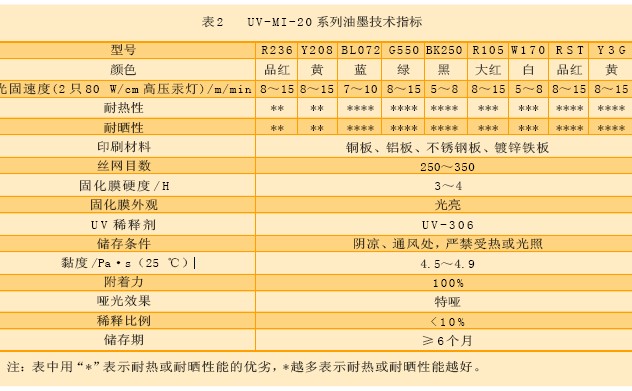UV metal ink printing and curing Printing color sequence Each UV metal ink has an optimal printing sequence. The UV curing inks of different colors have different photocuring speeds, such as slow curing and fast curing. Unlike self-drying solvent inks, any color can be printed first. In the case of screen printing of UV metallic inks, in particular multi-color printing, dark ink is generally followed, and light ink is printed. Different colors of UV metal inks have an optimal curing sequence. UV metal inks are cured in the order of gold, silver, black, blue, red, yellow, and colorless transparent varnish. Dark ink requires large UV light energy, drying is slow, and UV light is not easy to penetrate the ink layer, the bottom layer is more difficult to cure, it must be printed dark; light-colored ink is easy to cure, only need to light once. If you first print light-colored ink, it will inevitably lead to light-colored curing, ink layer crisp, poor adhesion, and dark ink layer curing is not enough, the surface hardness is low, abrasion resistance, poor resistance and other shortcomings. UV inks can be cured immediately by printing, once printed in one color, once the second color ink is cured, the first color ink has been illuminated twice. If it is a four-color pattern, when the fourth color ink is cured, the bottom layer ink has been cured. Four times. The choice of screen mesh number Different types of UV metal inks require the use of different mesh screens for printing. The curing of UV ink is instantaneous. The faster the curing speed is, the more easily the cured film shrinks. The lower the mesh mesh number, the larger the wire diameter, the thicker the ink layer, the more obvious the shrinkage of the cured film, and the ink layer and the metal substrate. When the shrinkage cannot be synchronized, it will inevitably lead to a decrease in adhesion. General color ink such as UV-MI-20, UV-MI-25, UV-MI-105 series available 300 ~ 350 mesh screen, and UV-3 0 0 sand series ink can only use 180 ~ 220 mesh This is due to the size of the metal particles contained in the ink. The mesh is too high and the sand cannot leak. When printing UV resist ink, it is necessary to determine the mesh according to the precision and depth of the metal etching. Fine patterns can be printed with 300 mesh. When etching is deep, 120 mesh mesh is sometimes used. When printing UV special effects inks, there are curing conditions. For general metallic ink such as UV-MI-20 series, when using 300-mesh screen printing, two 80 W/cm or more high-pressure mercury light curing machines can be used for curing at a speed of 5 to 15 m/min and the pencil hardness of the cured film. Greater than 4H, adhesion 100%. UV-MI-25 Series Photo-Solid Metal Ink contains a small amount of small-molecule auxiliaries, which can enhance the wetting of the mirror metal by the ink and improve the penetration of the ink to the metal surface coating. Therefore, before the product is cured, the infrared lamp or hot air is used. Heating the surface of the metal product can effectively improve the fastness of the ink. For the surface porous, such as anodized aluminum, sandblasting or metal products with matte effect, can significantly increase the ink adhesion and surface hardness. The light curing machine in Fig. 5, equipped with an infrared heating device and a wrinkle device, was designed specifically for the curing of these hard-to-adhere metals. UV-MI-105 Series Elastic Metal Ink In order to make the cured film have good elasticity and resist stretching in the stamping process, the cross-linking density of the cured film is not very high, so the UV curing speed should be slower. Among the UV special effect inks, the UV-880 ice ink has the slowest curing speed. The curing of this ink is divided into two processes: the production and curing of the ice flower pattern. The production of the ice flower pattern does not require too strong UV light irradiation, but this process usually takes several tens of seconds. After the ice flower is formed, it can be cured with strong light. Many light-solid equipment manufacturing companies do not understand this principle, and the power produced by the light-solid machine is very large. Most of the light energy becomes heat energy. Not only does it cost electricity, heat is hard to discharge, and the effect is not good. In Fig. 6, the UV light curing machine can be adjusted with high and low pitch. Â Â Â Â 